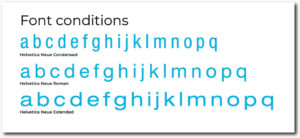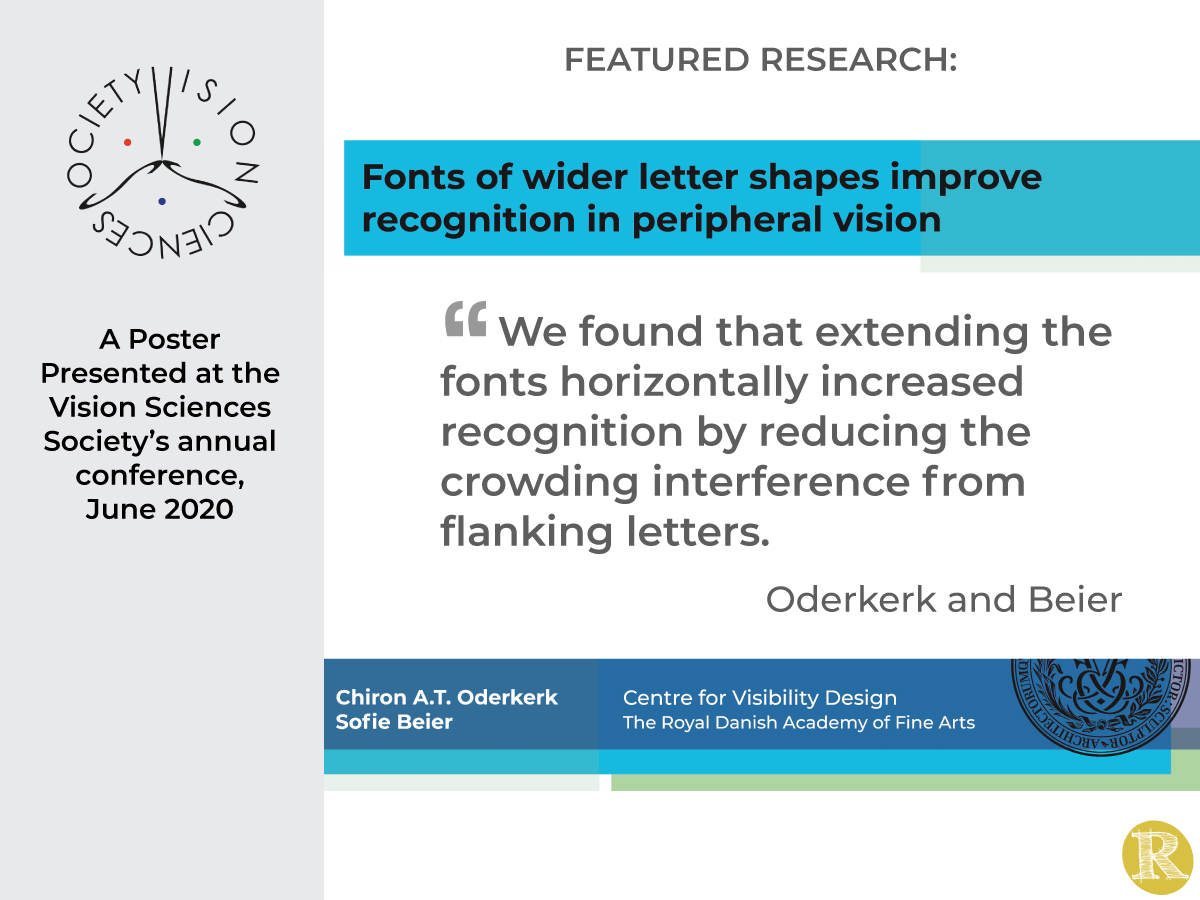Research Highlight
Chiron A.T. Oderkerk and Sofie Beier of the Centre for Visibility Design at The Royal Danish Academy of Fine Arts in Copenhagen, Denmark, presented a poster at the June 2020 virtual Vision Sciences Society conference. The study “Fonts of Wider Letter Shapes Improve Recognition in Peripheral Vision,” investigated the effect of font width on letter recognition.
 Oderkerk and Beier tested three variations of Helvetica: Condensed, Roman, and Expanded. They ran two separate testing scenarios on 25 participants. They concluded that extending fonts horizontally (increasing character width) increased letter recognition. The authors write that reducing the crowding interference from surrounding letters produced the positive impact.
Oderkerk and Beier tested three variations of Helvetica: Condensed, Roman, and Expanded. They ran two separate testing scenarios on 25 participants. They concluded that extending fonts horizontally (increasing character width) increased letter recognition. The authors write that reducing the crowding interference from surrounding letters produced the positive impact.
Implications for Readability
Readability Matters has also seen reading improvements in some readers when using widened characters. The White Paper: Tech Proof of Concept Results notes that “character expansion” (character width) was one of the Readability Features that improved reading performance for some of the 3rd grade and 7th grade students in studies conducted in both 2015 and in 2018.
Readability Matters is interested in Readability Feature research examining individual impacts. Why do some readers do better with wider letters? What are the impacts of improved letter recognition in increasing reading speed, accuracy, and comprehension?
See the abstract and the poster.
ABOUT CHIRON A. T. ODERKERK: Chiron A. T. Oderkerk is a postdoc in the Schools of Architecture, Design, and Conservation (KADK) at The Royal Danish Academy of Fine Arts in Copenhagen, Denmark.
ABOUT SOFIE BEIER: Sofie Beier is a type designer and associate professor in the School of Design at The Royal Danish Academy of Fine Arts. She serves as the head of the Centre for Visibility Design. She holds a Ph.D. from the Royal College of Art in London and is the author of the book “Reading Letters: Designing for Legibility”. Her current research is focused on improving the reading experience by achieving a better understanding of how different typefaces and letter shapes can influence the way we read. More information is available on Dr. Beier’s website.
ABOUT VSS: The Vision Sciences Society is a nonprofit membership organization of scientists who are interested in the functional aspects of vision. VSS was founded in 2001 with the main purpose of holding an annual meeting that brings together in one forum scientists from the broad range of disciplines that contribute to vision science, including visual psychophysics, neuroscience, computational vision, and cognitive psychology. The scientific content of the meetings reflects the breadth of topics in modern vision science, from visual coding to perception, recognition, and the visual control of action, as well as the recent development of new methodologies from cognitive psychology, computer vision, and neuroimaging.




